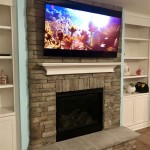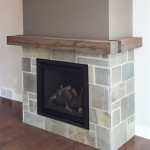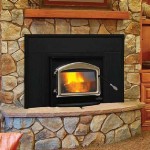Living Room Layout Ideas With Corner Fireplace
A corner fireplace presents both a design challenge and a unique opportunity when planning a living room layout. Unlike a fireplace centered on a wall, a corner placement demands careful consideration of furniture arrangement, traffic flow, and focal point balance. Effectively integrating a corner fireplace requires a strategic approach to maximize space, enhance aesthetic appeal, and create a comfortable and functional living environment.
The inherent asymmetry of a corner fireplace necessitates a layout that addresses visual balance. Ignoring this principle can result in a room that feels lopsided or incomplete. Successfully incorporating the fireplace involves considering factors such as the scale of the room, the size of the fireplace itself, and the desired seating capacity. This article will explore various living room layout ideas designed to complement and accentuate a corner fireplace, providing a foundation for creating a harmonious and inviting space.
Optimizing Furniture Placement Around a Corner Fireplace
The placement of primary seating is paramount when designing a living room with a corner fireplace. The most common approach involves arranging furniture to face the fireplace, thus establishing it as the central focal point. This can be achieved through several configurations, each with its own distinct advantages. One popular option is to position a sofa directly opposite the fireplace, creating a clear line of sight and promoting conversation. This layout works particularly well in rectangular rooms, where the sofa can anchor the space and provide a natural barrier between the living area and other parts of the room.
Another effective strategy involves using an L-shaped seating arrangement. This configuration consists of a sofa and a loveseat or a pair of armchairs positioned at right angles to each other, forming an "L" shape. The corner of the "L" is typically oriented towards the fireplace, creating an inclusive and intimate seating area. This layout is particularly well-suited for smaller living rooms, as it maximizes seating capacity without overwhelming the space. Furthermore, the L-shaped arrangement facilitates conversation and encourages interaction among occupants.
In larger living rooms, a more expansive seating arrangement may be appropriate. This could involve incorporating multiple sofas, armchairs, and ottomans to create a layered and inviting atmosphere. The fireplace remains a focal point, but the seating is distributed more evenly throughout the room. This type of layout is ideal for entertaining guests and accommodating larger families. When implementing a larger seating arrangement, it is important to maintain a sense of balance and ensure that the furniture does not obstruct traffic flow.
Regardless of the specific seating arrangement chosen, it is essential to consider the distance between the furniture and the fireplace. A general rule of thumb is to maintain a distance of at least three feet between the fireplace and any upholstered furniture. This helps to prevent overheating and reduces the risk of fire hazards. Furthermore, adequate spacing allows for comfortable movement around the furniture and enhances the overall functionality of the living room.
In addition to the primary seating, accent chairs can be strategically placed to enhance the overall aesthetic and functionality of the room. These chairs can be positioned to flank the fireplace, creating a symmetrical and balanced look. Alternatively, they can be placed in other areas of the room to provide additional seating options and break up the monotony of the layout. When selecting accent chairs, it is important to choose pieces that complement the existing furniture and décor. Consider factors such as color, texture, and style to ensure a cohesive and harmonious look.
Balancing the Visual Weight and Decor Around the Fireplace
Achieving visual balance is crucial for creating a harmonious living room design. A corner fireplace, by its very nature, can create a sense of asymmetry. Therefore, it is essential to counterbalance this asymmetry through careful consideration of other elements in the room. This can be achieved through various techniques, including the strategic placement of artwork, accessories, and lighting.
One effective approach is to create a focal point opposite the fireplace. This could be a large piece of artwork, a statement mirror, or a built-in bookshelf. By drawing the eye to this opposing point, one can effectively balance the visual weight of the fireplace and create a sense of equilibrium in the room. The size and style of the opposing focal point should be proportionate to the scale of the fireplace and the overall size of the living room.
Another technique for balancing the visual weight is to use vertical elements to draw the eye upwards. Tall plants, floor lamps, and vertical artwork can help to create a sense of height and balance the horizontal dominance of the fireplace. These elements can be strategically placed on either side of the fireplace or in other areas of the room to create a sense of visual interest and depth.
Accessories play a crucial role in enhancing the overall aesthetic appeal of a living room with a corner fireplace. Carefully chosen accessories can add personality, texture, and color to the space. When selecting accessories, it is important to consider the overall style and theme of the room. For instance, a rustic living room might benefit from the addition of wooden bowls, woven baskets, and earthenware pottery. In contrast, a modern living room might be enhanced by the addition of sleek metal sculptures, glass vases, and minimalist artwork.
The mantel above the fireplace provides an opportunity to create a visually appealing display. This can be achieved through the arrangement of artwork, photographs, candles, and other decorative items. When styling the mantel, it is important to maintain a sense of balance and avoid overcrowding. A general rule of thumb is to group items in odd numbers and vary their heights and sizes to create visual interest. Additionally, consider incorporating elements that reflect the season or upcoming holidays to add a festive touch to the living room.
Lighting is another critical element in creating a balanced and inviting living room. A combination of ambient, task, and accent lighting can help to illuminate the space and create a warm and welcoming atmosphere. Ambient lighting, such as recessed lighting or chandeliers, provides overall illumination for the room. Task lighting, such as table lamps and floor lamps, provides focused light for reading or other activities. Accent lighting, such as spotlights or track lighting, highlights specific features of the room, such as artwork or architectural details.
Maximizing Space and Traffic Flow
Effective space planning is essential for creating a functional and comfortable living room, particularly when dealing with a corner fireplace. A well-planned layout will optimize the use of space, facilitate smooth traffic flow, and create a sense of openness and airiness. This involves careful consideration of furniture placement, the use of rugs, and the incorporation of storage solutions.
One of the key considerations in space planning is to ensure that there is adequate circulation space throughout the room. This means leaving enough room for people to move freely around the furniture without feeling cramped or obstructed. A general rule of thumb is to maintain a minimum of three feet of clearance between furniture pieces. This allows for comfortable movement and prevents the room from feeling cluttered.
The placement of rugs can play a significant role in defining the different zones within the living room. A large area rug can be used to anchor the seating area and create a sense of cohesion. The rug should be large enough to accommodate all of the front legs of the furniture pieces, creating a unified and inviting space. Smaller rugs can be used to define separate areas within the room, such as a reading nook or a play area.
In smaller living rooms, it is particularly important to maximize the use of space. This can be achieved through the use of multifunctional furniture, such as a sofa with built-in storage or an ottoman that can double as a coffee table. These pieces can help to reduce clutter and provide additional storage options, allowing you to keep the room tidy and organized.
Storage solutions are essential for maintaining a clutter-free living room. Built-in bookshelves, floating shelves, and cabinets can provide ample storage space for books, magazines, toys, and other items. These storage solutions can be integrated seamlessly into the design of the room, creating a functional and aesthetically pleasing space. When selecting storage solutions, it is important to choose pieces that complement the existing furniture and décor.
The use of mirrors can also help to create a sense of spaciousness in a small living room. A large mirror placed on a wall can reflect light and create the illusion of a larger space. Mirrors can also be used to highlight specific features of the room, such as artwork or architectural details. When placing mirrors, it is important to consider the reflections they will create and avoid placing them in areas where they will reflect clutter or unsightly views.
Finally, consider vertical storage options. Utilizing wall space with shelving units or tall cabinets can free up floor space and create a more open feel. This is particularly useful in smaller living rooms where every inch of space counts. Think about floating shelves above the fireplace, or tall, slim cabinets on either side to store books, media, or decorative items. These options not only provide storage but also add visual interest to the room.

How To Arrange Furniture With A Corner Fireplace Setting For Four Interiors

How To Design Around A Corner Fireplace

How To Arrange Furniture With A Corner Fireplace Setting For Four Interiors

Google Chrome The Fast Secure Browser From Furniture Placement Living Room Corner Fireplace Layout

Working With A Corner Fireplace Emily Clark

How To Design Around A Corner Fireplace

How To Design A Living Room With Corner Fireplace Layout Modsy Blog Makeover

Q A With Christine Tse Interiors

Awkward Living Room Layout With Corner Fireplace

How To Arrange Furniture With A Corner Fireplace Setting For Four Interiors
Related Posts








